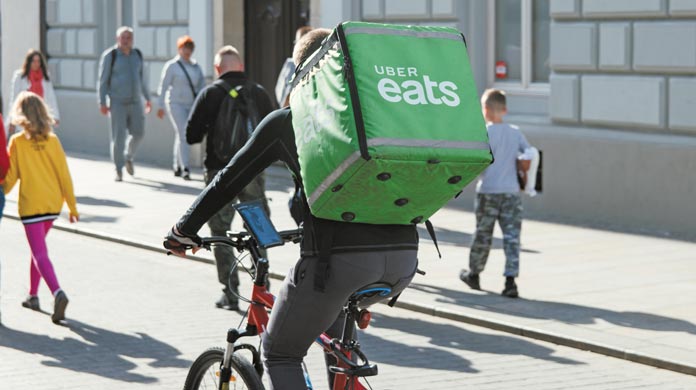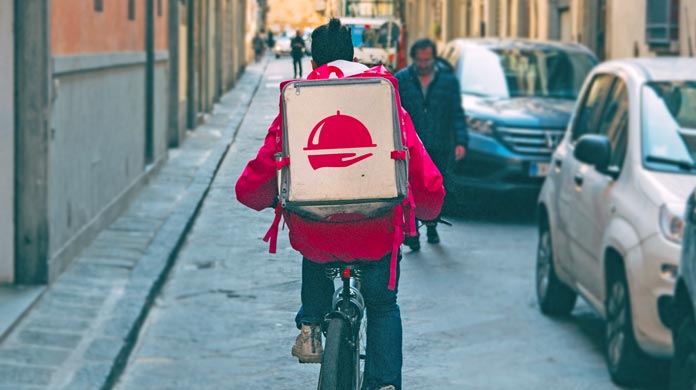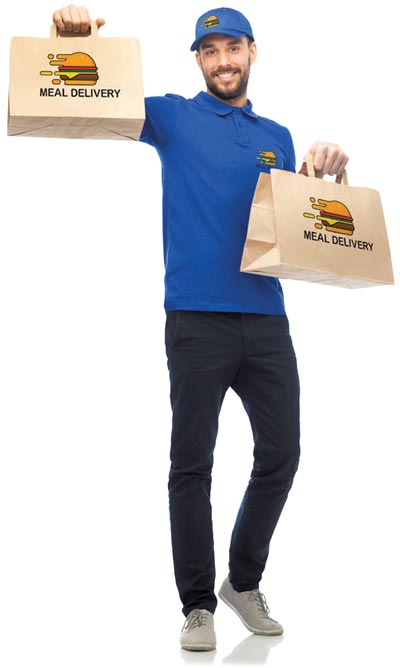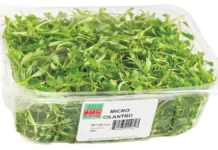
Among the significant trends in foodservice recently was the repositioning of delivery and takeout. For the past decade plus, it was a change in lifestyle that drove the growth.
For many restaurants and foodservice operators, it was a reflection of their own busy lives. Mom and Dad were both working and from sports to music, children in the households that were to put it mildly: overscheduled from dawn to dusk. With that came explosive growth in delivery and takeout revenues for Metro New York and the nation’s dining operators.
Over the past two years, that growth is finding its impetus from a phenomenon that has impacted all of us: technology. What was just a single on-line ordering platform with Seamless Web in 2015, has morphed into a highly competitive marketplace with Grubhub, Uber Eats and Door Dash among those that have created an industry projected to generate $23.9 billion in 2020. With estimated growth pegged at 5.1% over the next five years, it is estimated revenue will result in a market volume of $29.2 billion by 2023.
Further proof of this growth has been the emergence of the “ghost kitchen.” This enables the foodservice operator to move out of expensive real estate to create a central commissary to support their delivery business. This trend allows a restaurant to eliminate all of the overhead of retail space and wait staff in favor of just the preparation and delivery of meals. Among those driving that trend is former Uber CEO Travis Kalanick. After his ouster from Uber, he’s kept a controlling stake in City Storage Systems, the Los Angeles-based parent company to a ghost kitchen start-up called CloudKitchens. Also, Kitchen United will build 400 kitchen centers and install 5,000 virtual kitchens over four years to service operators, including Sweetgreen and Chick-fil-A. DoorDash has opened its commissary kitchen in Silicon Valley.
Among the keys to supporting the growth of the delivery segment are, of course, the creating of the right app to support a customer base. Most importantly, to build traction that comes from the trust of a customer is the ability to replicate the quality of food served in the restaurant. With that has come a fresh new look in packaging.
There are several critical determining factors when choosing the packaging needed to support a successful and sustainable delivery program. At the top of that list is the ability to keep food hot for the time in transit. Restaurants are paying a premium to partner with third-party vendors, so the right choice of packaging ensures the investment they are making provides an excellent customer experience.
Twenty years ago, there were two options for delivery: pizza or Chinese food. Restaurants asked for takeout would use whatever they had available for customer leftovers. They often used the same foam clamshell to handle off-premise dining. Transportation of takeout food by companies rather than the customer has changed the perception of quality in the marketplace.
With the restaurant investing in delivery costs, the old foam clamshell that was a staple for so long and banned recently doesn’t reflect the realities of today’s marketplace. Despite increased food and labor cost, most operators realize the need to add the right packaging to compete.
 It’s interesting that even with the growth of delivery to encompass a number of cuisines, the classic French fry remains at the top of the list for the most ordered side item. Anchor Packaging, a St. Louis, MO-based company, has embraced the challenge of eliminating the soggy and cold order of fries before it reaches the consumer. French fries are just one of the many fried foods that Anchor has found a solution for with Crisp Food Technologies® containers. These hinged and two-piece bases and lids keep meals, sides, and large portions of fried foods hot and crispy up to 30 minutes utilizing a patented “convection cross-flow design that relieves moisture and condensation while maintaining food temperature. Over 16,000 locations have tried these products, found them to be more effective than any other package, and are using them to grow their business today. Later this month, the company will be launching a new container within the same line specifically intended to hold an order of fries, chicken strips, egg rolls, and other side items. It is rumored to be the lowest-priced item within the line, costing less than some paper containers.
It’s interesting that even with the growth of delivery to encompass a number of cuisines, the classic French fry remains at the top of the list for the most ordered side item. Anchor Packaging, a St. Louis, MO-based company, has embraced the challenge of eliminating the soggy and cold order of fries before it reaches the consumer. French fries are just one of the many fried foods that Anchor has found a solution for with Crisp Food Technologies® containers. These hinged and two-piece bases and lids keep meals, sides, and large portions of fried foods hot and crispy up to 30 minutes utilizing a patented “convection cross-flow design that relieves moisture and condensation while maintaining food temperature. Over 16,000 locations have tried these products, found them to be more effective than any other package, and are using them to grow their business today. Later this month, the company will be launching a new container within the same line specifically intended to hold an order of fries, chicken strips, egg rolls, and other side items. It is rumored to be the lowest-priced item within the line, costing less than some paper containers.
Several foodservice operators are looking to take advantage of the delivery and takeout growth with a hybrid approach. The Washington, DC-based salad chain Sweetgreen that has built a significant presence in Manhattan, has announced plans to grow its 400 “outpost” locations. These business and industry (B&I) locations allow Sweetgreen to take orders from employees and drop them off, en masse, at a central location for individual pickup.
Last year also brought the launch of Wegmans supermarkets to the Metro New York marketplace. They opened a much talked about Brooklyn location and will open in Westchester County in June. The Rochester, NY based grocer continues to add more prepared grab-and-go foods, becoming, in the process, grocerants: a hybrid place where people not only shop, but dine-in and takeout. With that growth, Wegmans has partnered with DoorDash for delivery of their prepared foods.
Among the other major issues impacting the delivery issue is waste. The right approach to packaging can assist a restaurant in making a statement on the subject of waste. Food waste is a huge problem in the foodservice channel. ReFED reports that 52 million tons of food are sent to landfills annually in the US alone, plus another 10 million that are discarded or left unharvested.
 Given this enormous waste of valuable resources, restaurants and suppliers are doing everything they can to reduce waste and repurpose what they can’t. The technology company Winnow reports that food waste costs the hospitality industry $100 billion annually, with up to 20 percent of food wasted. Their artificial intelligence system allows operators to identify what’s being discarded, giving them data on when and where waste occurs, which is the first step in eliminating it.
Given this enormous waste of valuable resources, restaurants and suppliers are doing everything they can to reduce waste and repurpose what they can’t. The technology company Winnow reports that food waste costs the hospitality industry $100 billion annually, with up to 20 percent of food wasted. Their artificial intelligence system allows operators to identify what’s being discarded, giving them data on when and where waste occurs, which is the first step in eliminating it.
Delivery and takeout are so significant that top chefs realize that their imprint is on everything that leaves the kitchen, whether the destination is a table in their dining room or a delivery customer home. With that comes the need to provide high-quality packaging that protects the integrity of the restaurant’s brand which is defined by taste, texture and presentation that you would get on-premise.























